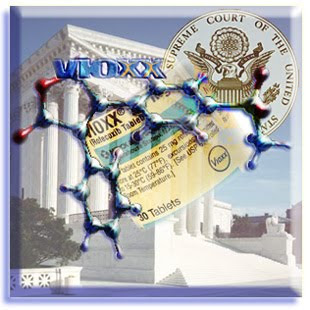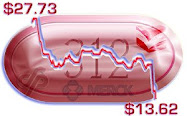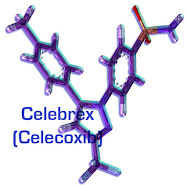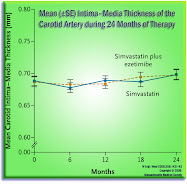Even so -- I take my hat off to Mr. Frazier. He's done a very good job -- of piloting this massive enterprise, toward a more nimble future incarnation. That's his vision. Surprisingly, at least in the Remicade®/Simponi® franchises, currencies added a five percent tailwind. Overall, currencies were a net-neutral. [Even with the Venezuelan devaluation. . . fascinating -- must be some smart hedging underway.] Okay -- let's get to it, then -- from the presser:
. . . .Worldwide sales were $10.9 billion for the second quarter of 2014, a decrease of 1 percent compared with the second quarter of 2013, with no net impact from foreign exchange. . . .
Second-quarter pharmaceutical sales declined 2 percent to $9.1 billion. Expected declines occurred due to the ongoing impact of the loss of market exclusivity for TEMODAR (temozolomide) and NASONEX (mometasone furoate monohydrate). Additionally, sales from the hepatitis franchise of VICTRELIS (boceprevir) and PEGINTRON (peginterferon alfa-2b) declined as a result of increased competition. These declines were partially offset by growth in REMICADE (infliximab), SIMPONI (golimumab) and ISENTRESS (raltegravir), as well as the cardiovascular franchise of ZETIA (ezetimibe)/VYTORIN (ezetimibe/simvastatin) and the diabetes franchise of JANUVIA (sitagliptin)/JANUMET (sitagliptin and metformin HCI).
Combined sales of JANUVIA and JANUMET, medicines that help lower blood sugar levels in adults with type 2 diabetes, grew 2 percent to $1.6 billion in the second quarter. The growth reflects higher sales in Europe and the emerging markets, which were partially offset by declines in Japan. Sales in the United States decreased 1 percent.
Combined sales of ZETIA and VYTORIN, medicines for lowering LDL cholesterol, increased 6 percent to $1.1 billion in the second quarter, including a 1 percent positive impact from foreign exchange. The growth was driven by higher sales of ZETIA in the United States, reflecting wholesaler purchases and price increases.
Combined sales of REMICADE and SIMPONI, treatments for inflammatory diseases, grew 21 percent to $781 million in the second quarter, including a 6 percent positive impact from foreign exchange. . . .
Other (income) expense, net, was $558 million of income in the second quarter of 2014, compared to $201 million of expense in the second quarter of 2013. The second quarter of 2014 includes a $741 million gain recorded in connection with AZ’s option exercise.
The GAAP effective tax rate of (7.5) percent for the second quarter of 2014 reflects the impacts of acquisition- and divestiture-related costs and restructuring costs, as well as a net benefit of $517 million associated with AZ’s option exercise. The non-GAAP effective tax rate, which excludes these items, was 24.2 percent for the quarter. . . .
All of that said, it puzzles me that Vytorin®/Zetia® sales rose slightly (1 per cent), even inside the US (more precisely, Zetia was up 4 per cent, while Vytorin was off 4 per cent). By later in Q4 2014 -- I expect to see IMPROVE-IT data which will likely declare the drugs. . . non-meaningful, as to outcomes. Apparently, some US formularies are restocking the drug, accounting for the bulk of the uptick. But, as ever, we shall see. Overall, a solid performance in the quarter. Onward!


















No comments:
Post a Comment